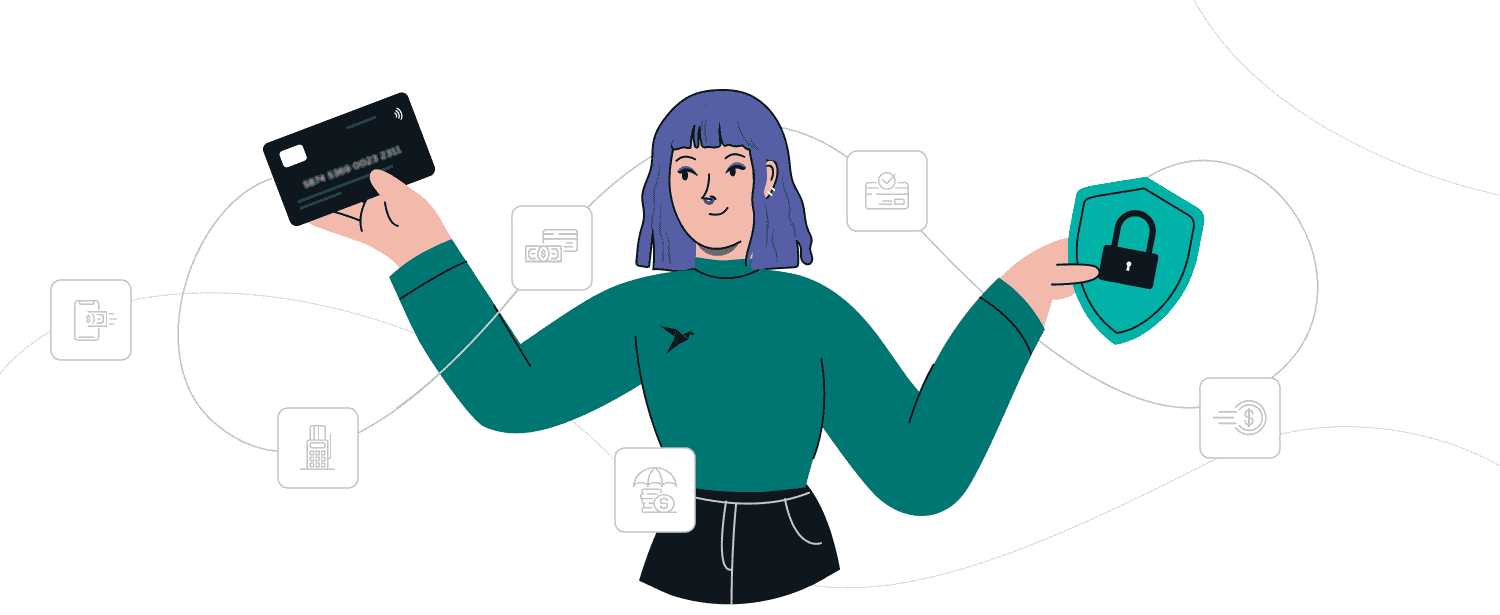You would never leave your shop door unlocked, would you? Instead, you would add extra security features for the protection of your goods inside. But many businesses leave their digital doors wide open by storing real card data. Every day, businesses face the risk of digital theft just by storing sensitive payment information. But there is a smarter way to stay safe. It is called payment tokenization! It is like adding five locks and a fake address to your business. It turns card numbers into tokens that cannot be misused, even if stolen. Safe, silent, and stress-free. This blog will walk you through what tokenisation is, how it keeps you safe, and why it is quickly becoming the standard for secure digital payments. So, keep reading!
What is Payment Tokenization and How it Works
Payment tokenization replaces a real card number with a random token that looks like a number but has no value. A customer pays, the card data is sent to a token service, and a token is created and stored securely. Your system stores that token instead of the real card number. When needed, the payment network maps the token back to a real card behind the scenes. If someone steals the toke, they cannot do anything with it. This keeps your database clean of sensitive data while payments still work smoothly. Tokenization is supported by major networks and meets industry data protection standards.
How Payment Tokenization Benefits Your Business
Let us look at all the ways payment tokenization helps your business stay secure and protected:
Improved security
Storing tokens, which are not actual card numbers, means a hacker who gets in finds nothing useful—that dramatically lowers the risk of fraud and data breach costs. Tokenization protects your reputation. It cuts the fallout if something goes wrong. Many companies see fraud drop sharply after switching to tokenisation.
Reduced compliance burden
Since you no longer hold real payment data, tokenisation shrinks your PCI DSS requirements. That means fewer audits and less cost. You still follow rules but spend far less time managing data security. This opens up budgeting for growth instead of compliance overhead.
Better customer experience
Tokens let you offer a smooth checkout for repeat buyers or subscriptions without re-asking for card details. That feels fast and convenient. Customers enjoy one-click purchases while your system stays secure. Happier users and streamlined repeat business make tokenisation doubly useful.
Lower breach impact and costs
Even if attackers get into your systems, they only find tokens, not real data. That reduces legal exposure, breach fines and reputational damage. Insurance claims and breach recovery costs shrink. Your business stays more resilient and cost-efficient over time thanks to the token shield.
What Types of Businesses Should Use payment tokenization
Payment tokenization is useful for a range of business models, even if you are just starting.
- E-commerce stores: storing payment info for returning customers without risk works well via tokens.
- Subscription services: for monthly billing tokens let you charge safely without re asking for cards each time.
- Brick and mortar retailers: point of sale terminals can issue tokens so your system never sees real card numbers.
- Platforms and marketplaces: if you handle payments for others, tokens protect you and sellers by isolating sensitive data.
Future of Tokenisation
Tokenization is growing fast and is no longer optional in modern business. Here is where things are headed:
- More adoption globally: Visa has issued over 13 billion tokens, and nearly half of all e-commerce transactions worldwide already use tokenisation. Adoption is expected to rise across all payment types.
- Smarter network tokens: Tokens now work across different merchants and devices. This reduces payment failures and improves approval rates, especially in mobile wallets and one-click checkouts.
- Expansion beyond payments: Tokenisation is moving into financial assets like stocks, real estate and money market funds.
- Stronger fraud protection with AI: Payment providers are using tokenisation along with AI to spot fraud patterns. This makes tokenised payments even safer and more intelligent.
- Tokenised real-world assets: Analysts predict that tokenised real estate, gold and other physical goods could become a multi-trillion-dollar market by 2030.
- Banking and settlements: Major banks are exploring tokenisation for instant settlements, which could remove delays in cross-border and large-scale transactions.
How to Get Started with Tokenisation
If you are ready to protect your business, setting up tokenisation is simpler than it sounds. All you need is:
- Choose a reliable payment processor
Look for providers that offer tokenisation as a built-in feature. - Check for PCI compliance
Make sure the vendor is PCI-certified and has a strong security record. - Integrate with your platform
Most payment platforms give easy plugins or APIs for websites and apps. Tokens are issued automatically when a card is saved. - Test the system
Run a few transactions to make sure everything flows smoothly. Keep a log for audits and training purposes. - Inform your users
Let customers know that their data is safe thanks to tokenisation. This builds trust and boosts conversion.
Wrapping Up
Using payment tokenization means your business stops storing real card details and starts protecting customer data the smart way. It keeps fraud low, checkouts fast, and compliance easier. In today’s digital-first world, this extra layer of safety is no longer optional. It is the right step forward for small and large businesses alike. Start using tokenisation now to avoid problems later and show your customers you care about their safety. The sooner you adopt it, the better your business runs.





Be First to Comment